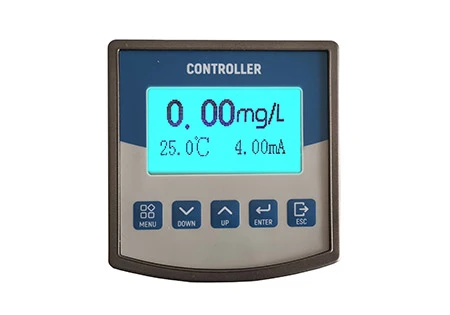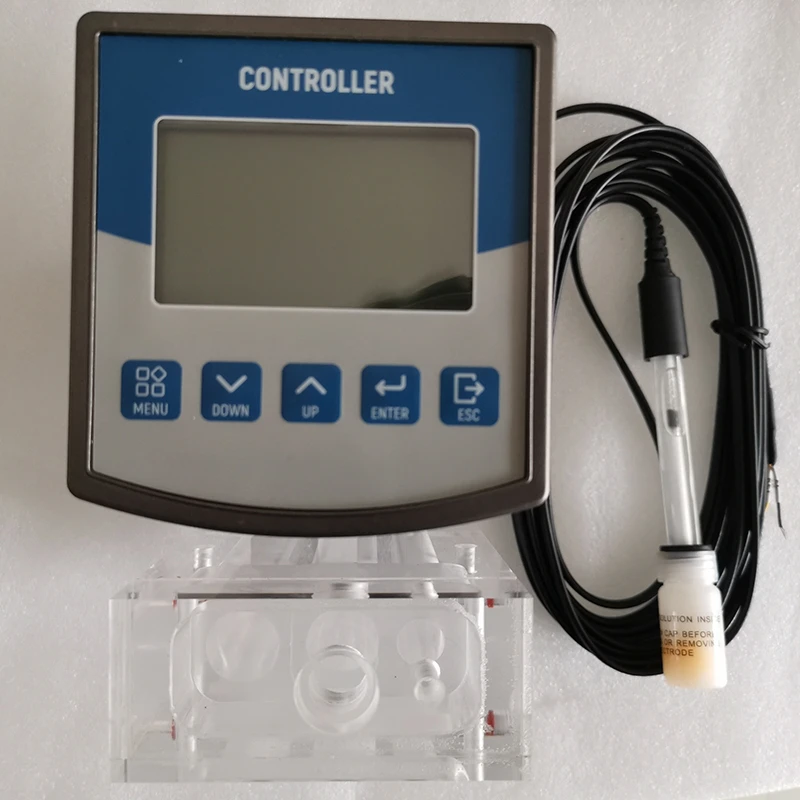Our residual chlorine meter is a state-of-the-art device designed to accurately measure the residual chlorine levels in various water samples. With its advanced sensor technology, it provides precise and reliable readings, ensuring the safety and quality of water.This meter features a user-friendly interface, making it easy for operators to navigate and operate. The large, clear display shows the measured values in real-time, allowing for quick and convenient monitoring. Additionally, it has a built-in data storage function, enabling users to record and review historical data for analysis.
The residual chlorine meter is highly versatile and can be used in a wide range of applications, including water treatment plants, swimming pools, and industrial processes. It is designed to withstand harsh environments and is built to last, ensuring long-term performance and durability.Whether you are a water treatment professional or a facility manager, our residual chlorine meter is the perfect tool to help you maintain the proper chlorine levels in your water systems. Trust in its accuracy and reliability to ensure the safety and well-being of your customers and employees.
What Is The Instrument Used To Measure Residual Chlorine?
The instrument used to measure residual chlorine is called a residual chlorine meter. It plays a crucial role in ensuring water safety across various settings. Residual chlorine meters typically operate based on electrochemical or colorimetric principles. Electrochemical meters use sensors that react to the presence of chlorine in the water sample, generating an electrical signal proportional to the chlorine concentration.Colorimetric meters, on the other hand, rely on chemical reactions that produce a color change in the sample, which is then measured photometrically. These meters are equipped with highly sensitive sensors and advanced circuitry to provide accurate and reliable readings. They often feature a user - friendly interface, including a large, easy - to - read display that shows the measured residual chlorine levels in real - time.
Some models also come with built - in data storage capabilities, allowing users to record and analyze historical data over time. Residual chlorine meters find wide applications in water treatment plants, swimming pools, spas, and even in industrial processes where water quality control is essential. They enable operators to maintain the appropriate chlorine levels, which is vital for disinfecting water, killing harmful bacteria, and preventing water - borne diseases. Their portability and ease of use make them accessible tools for both professionals and those responsible for small - scale water management.
How Is Chlorine Residual Measured?
Chlorine residual measurement is of utmost importance in ensuring water safety and quality. There are several reliable methods and instruments available for this crucial task.One common approach is the colorimetric method. This technique involves adding a specific reagent to the water sample. The reagent reacts with the residual chlorine present, producing a color change. The intensity of the color is then compared to a standard color chart or measured using a photometric device.Our state - of - the - art colorimetric residual chlorine meters are designed to simplify this process. They are equipped with high - precision optical sensors that can accurately detect even the slightest color variations. With a user - friendly interface, operators can easily input sample details and obtain instant, accurate readings. These meters are highly portable, making them ideal for on - site measurements in various settings such as water treatment plants, swimming pools, and food and beverage industries.
Another method is the electrochemical method. Electrochemical residual chlorine meters utilize electrodes that respond to the presence of chlorine in the water. When the water sample comes into contact with the electrodes, an electrochemical reaction occurs, generating an electrical signal. The magnitude of this signal is directly proportional to the chlorine concentration.Our electrochemical meters are engineered with advanced electrode technology, ensuring long - term stability and high sensitivity. They are also resistant to interference from other substances commonly found in water, providing reliable measurements even in complex environments.Measuring chlorine residual typically starts with collecting a representative water sample.
For accurate results, it's essential to follow proper sampling procedures. Then, depending on the chosen method, the sample is either treated with the reagent in the case of colorimetric measurement or placed in contact with the electrodes for electrochemical measurement. The meter processes the data and displays the chlorine residual value within seconds.Our range of residual chlorine measurement products is not only accurate but also durable. They are built to withstand harsh operating conditions, ensuring consistent performance over time. Whether you're a water treatment professional or a facility manager responsible for maintaining water quality, our instruments are the perfect choice to meet your chlorine residual measurement needs.








